Green onions (Allium fistulosum), also known as scallions or spring onions, are a versatile and flavorful addition to any kitchen. They are prized for their mild taste, crisp texture, and year-round availability. Unlike mature onions, green onions can be harvested quickly and continuously, making them ideal for home gardens. Growing green onions at home ensures fresh, nutrient-rich produce that enhances everyday cooking, from salads to soups and garnishes.
This article provides a comprehensive guide on growing green onions at home, covering soil preparation, planting, watering, fertilization, pest management, and harvesting. By following these steps, gardeners can enjoy a steady supply of fresh green onions without relying on store-bought varieties.
Why Grow Green Onions at Home?
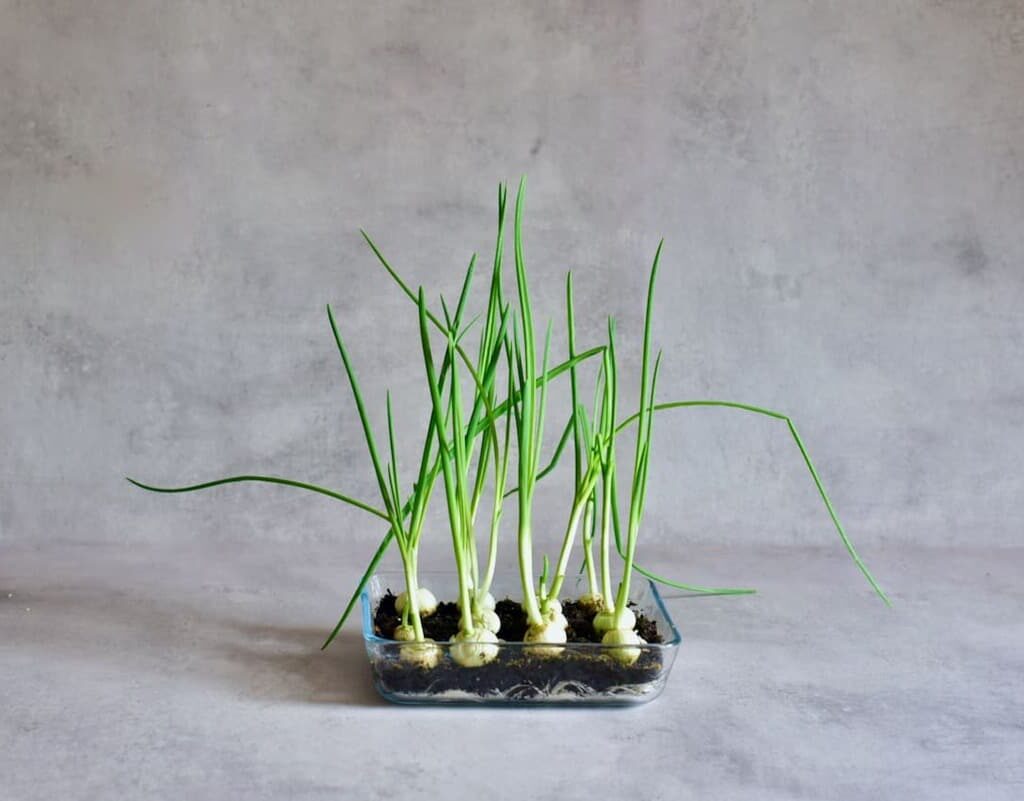
Growing green onions at home has numerous advantages:
- Continuous Harvest: Green onions can be harvested multiple times as they regrow quickly.
- Freshness and Flavor: Homegrown scallions are more flavorful than store-bought ones.
- Easy to Grow: They are low-maintenance and suitable for beginners.
- Space Efficiency: Can be grown in containers, garden beds, or even kitchen windowsills.
- Health Benefits: Rich in vitamins A, C, and K, and contain antioxidants that support overall health.
Choosing the Right Green Onion Variety
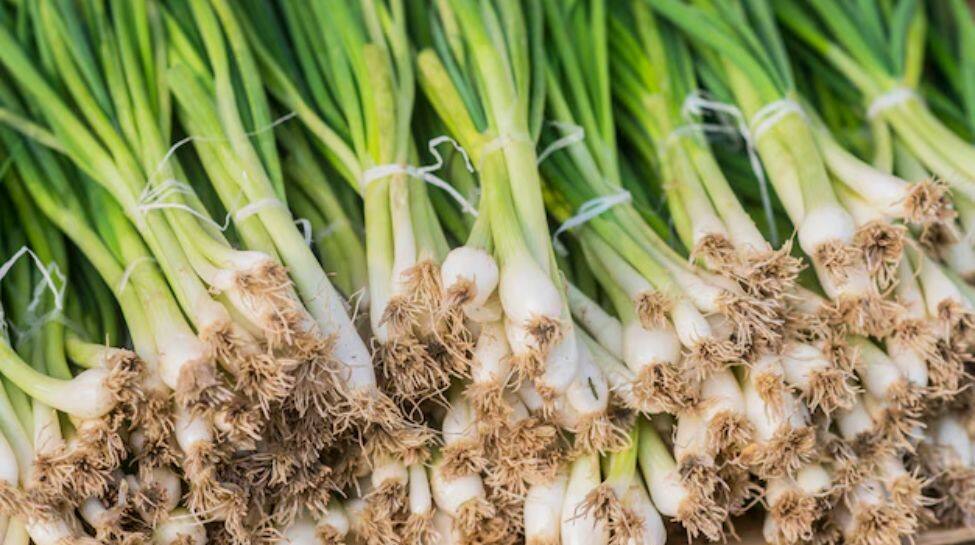
Several varieties of green onions are well-suited for home gardening:
- Evergreen Bunching Onions: Ideal for continuous harvesting; they don’t form large bulbs.
- White Lisbon: Fast-growing with mild flavor, suitable for containers and raised beds.
- Tokyo Long White: Produces long, tender stalks; ideal for culinary use.
Tip: Select a variety based on growth speed, flavor preference, and available growing space.
Preparing Soil for Planting
Green onions thrive in well-draining, fertile soil:
- Soil Type: Loamy or sandy soils are ideal. Avoid compacted clay soils.
- pH Level: Slightly acidic to neutral soil (6.0–7.0).
- Soil Enrichment: Incorporate compost or well-rotted manure to improve fertility and moisture retention.
- Raised Beds and Containers: Excellent options for gardeners with limited space or poor soil drainage.
Tip: Loose soil encourages straight, tender stalks and prevents bulb deformity.
Planting Green Onions
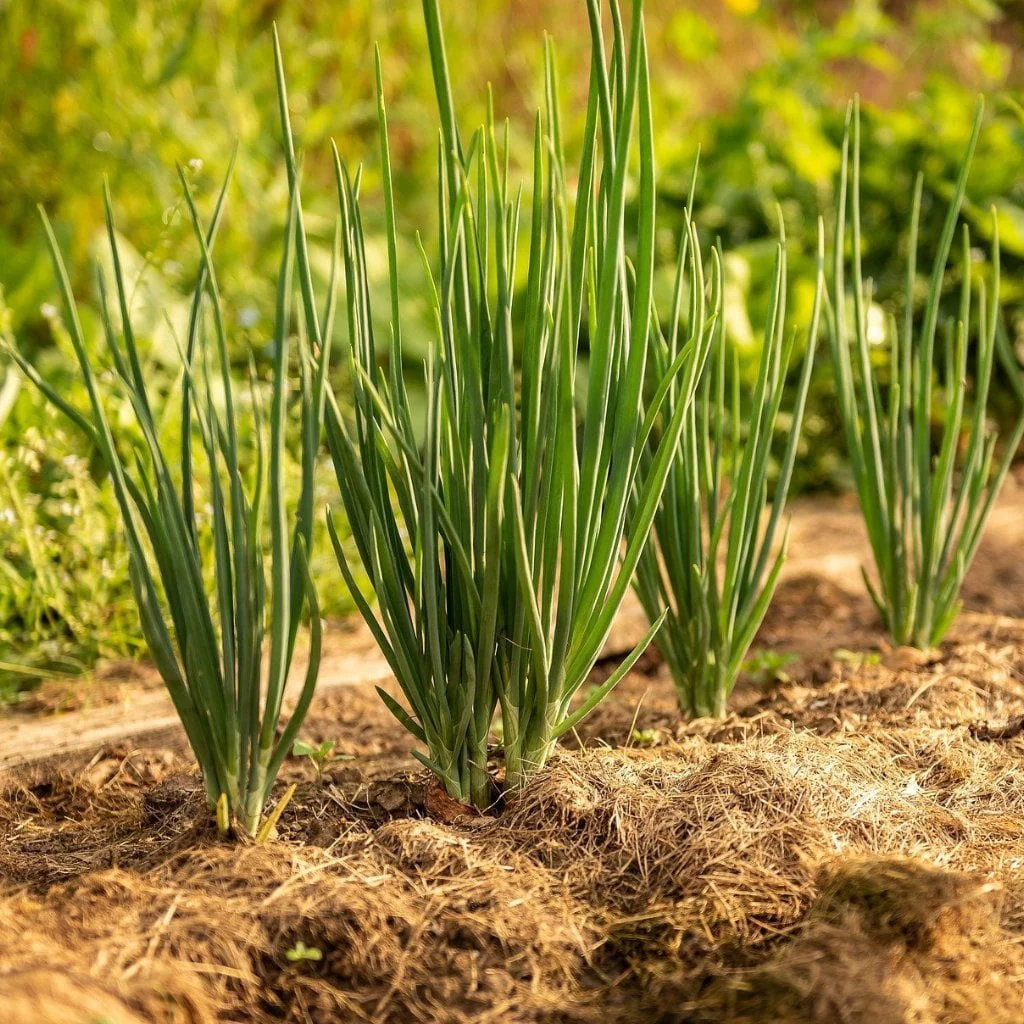
Green onions can be grown from seeds, sets, or transplants:
1. From Seeds:
- Sow seeds indoors 6–8 weeks before transplanting, or directly in garden beds after the last frost.
- Plant seeds 1/4–1/2 inch deep and cover lightly with soil.
- Keep soil moist and warm (60–75°F / 15–24°C).
- Germination occurs in 7–14 days.
2. From Sets or Bulbs:
- Plant small onion sets 1–2 inches deep with pointed ends up.
- Space 2–3 inches apart for optimal growth.
3. From Transplants:
- Seedlings with 3–4 leaves can be transplanted outdoors.
- Space them 2–3 inches apart and 12 inches between rows for good airflow.
Tip: Green onions are shallow-rooted, so planting depth and spacing are important for healthy growth.
Providing Sunlight
Green onions require full sun for optimal growth:
- Ensure at least 6 hours of direct sunlight daily.
- In hot climates, provide partial shade during afternoon hours to prevent heat stress.
Tip: Sunlight affects the color and tenderness of the stalks—more sun produces stronger, flavorful plants.
Watering and Moisture Management
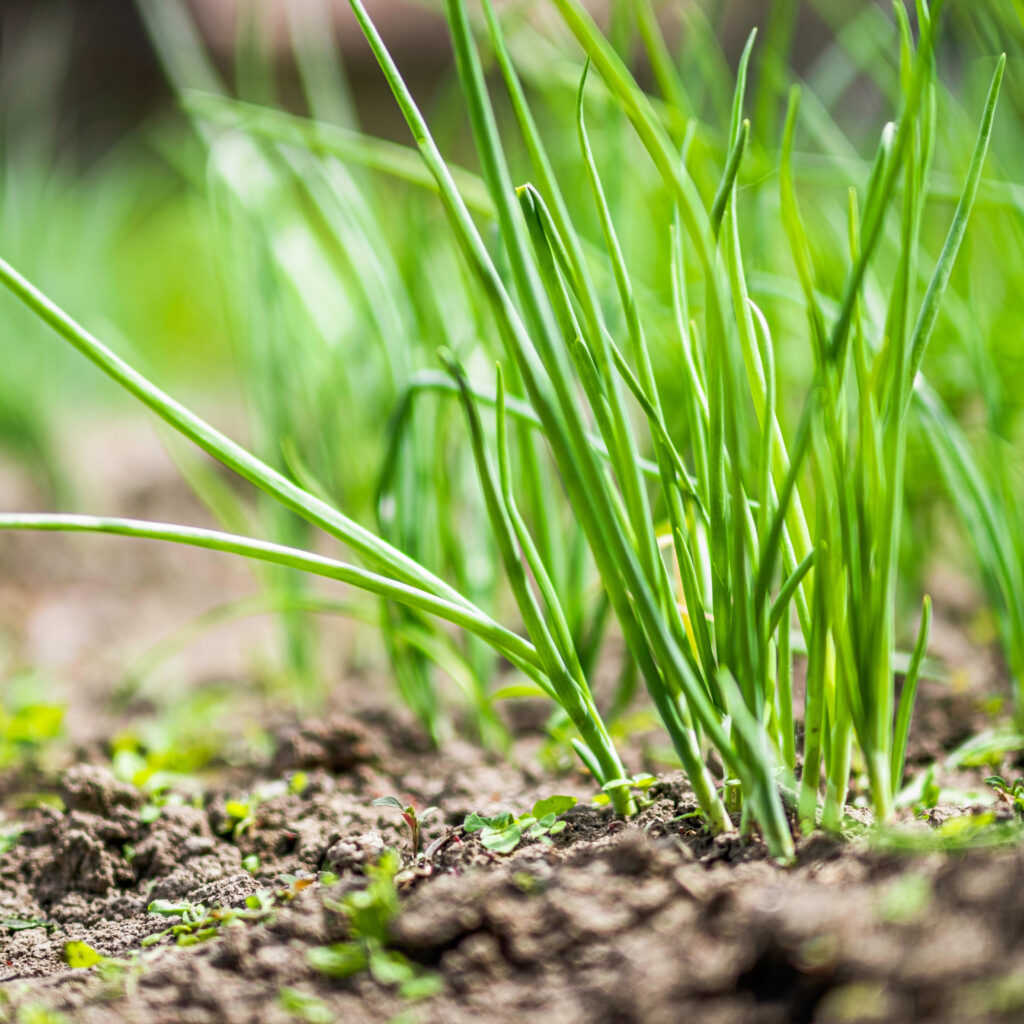
Consistent moisture is crucial for green onions:
- Water plants evenly to keep the soil moist but not waterlogged.
- Avoid overhead watering to reduce the risk of fungal diseases.
- Mulch around plants with straw or organic material to conserve soil moisture, regulate temperature, and suppress weeds.
Tip: Green onions respond well to deep, frequent watering during dry periods to encourage rapid growth.
Fertilization
Green onions are light feeders but benefit from additional nutrients:
- Apply balanced, water-soluble fertilizer every 3–4 weeks.
- Side-dress with compost or organic fertilizer to maintain soil fertility.
- Avoid over-fertilizing with nitrogen, which can produce excessive leafy growth without strengthening the stalks.
Tip: Fertilization supports continuous regrowth, ensuring a steady supply of green onions.
Controlling Pests and Diseases
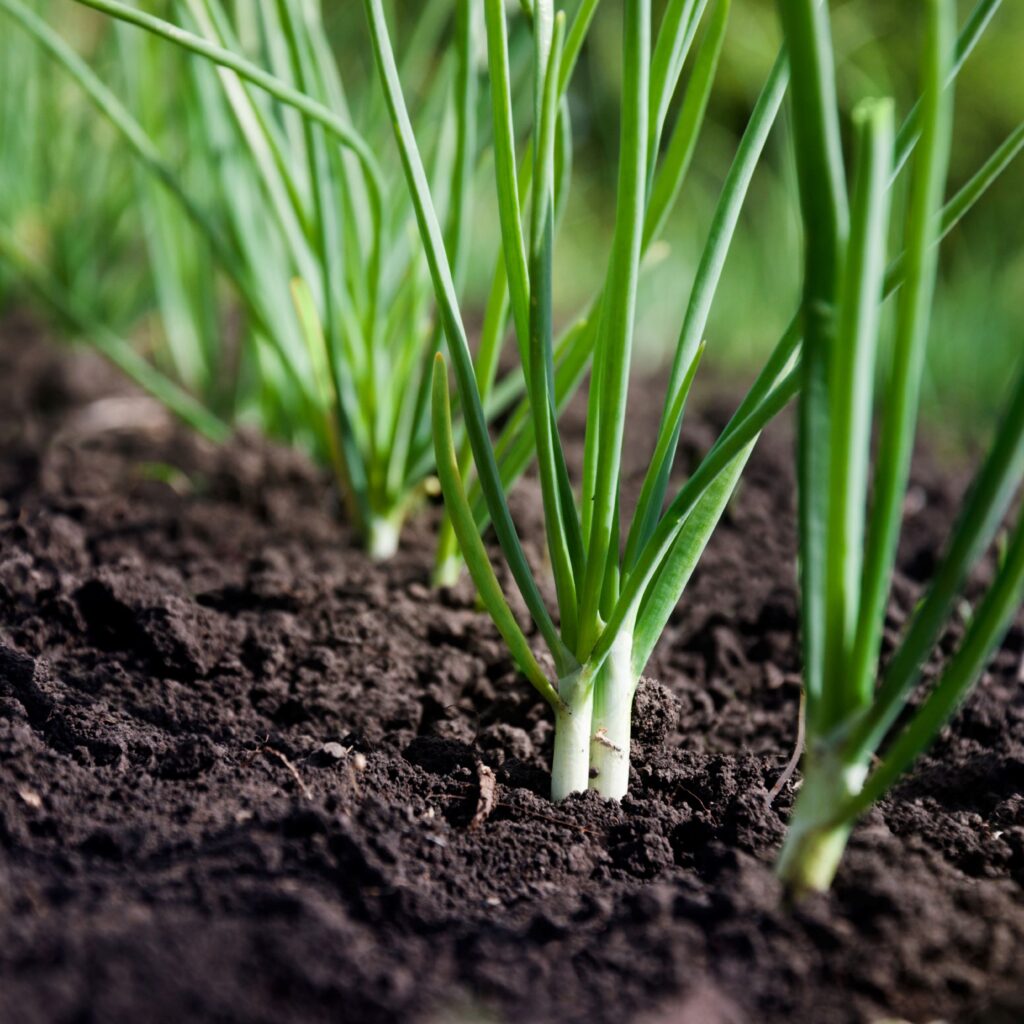
Green onions are generally resilient, but some issues can arise:
- Thrips: Small insects that feed on leaves; control with insecticidal soap or neem oil.
- Onion Maggots: Larvae can damage roots; practice crop rotation and use floating row covers.
- Fungal Diseases: Ensure proper spacing and good air circulation to prevent downy mildew and leaf blight.
Tip: Companion planting with carrots, lettuce, or herbs can reduce pest pressure naturally.
Harvesting Green Onions
One of the benefits of growing green onions is frequent harvesting:
- Begin harvesting when stalks reach 6–8 inches in height.
- Cut stalks at the base, leaving 1–2 inches to encourage regrowth.
- Harvest every 7–14 days for continuous production.
- Mature onions can be left to grow bulbs if desired, but the focus is usually on tender stalks.
Tip: Regular harvesting promotes healthier plants and prevents overcrowding.
Growing Green Onions in Containers
Containers are perfect for small spaces, balconies, or indoor growing:
- Use pots at least 6 inches deep with drainage holes.
- Fill with light, well-draining potting mix enriched with compost.
- Water consistently and place containers in sunny locations.
- Fertilize lightly every few weeks to maintain nutrient levels.
Tip: Green onions grow well indoors on sunny windowsills, making them accessible year-round.
Companion Planting
Green onions are excellent companion plants:
- Repel Pests: Protect carrots, tomatoes, and peppers from aphids and other insects.
- Interplanting: Can be grown alongside lettuce, spinach, or radishes without competing for nutrients.
- Natural Benefits: Enhances soil health and reduces disease incidence in nearby plants.
Seasonal Considerations
- Spring and Fall Planting: Ideal in most regions, providing continuous harvests.
- Summer Planting: Requires regular watering to prevent heat stress.
- Winter Growing: In mild climates, green onions can be grown year-round in raised beds or containers.
Final Thoughts
Growing green onions at home is a rewarding endeavor that combines ease of cultivation, nutritional benefits, and culinary versatility. By following the steps outlined—selecting the right variety, preparing fertile soil, planting correctly, providing sunlight, maintaining moisture, and practicing pest control—gardeners can enjoy fresh, flavorful green onions throughout the year.
Key takeaways for a bountiful harvest:
- Use seeds, sets, or transplants according to your growing conditions.
- Ensure full sun exposure and consistent watering.
- Space plants properly to allow airflow and healthy growth.
- Fertilize lightly and regularly for continuous production.
- Harvest frequently to encourage regrowth and maintain plant health.
Green onions are more than just a kitchen staple—they are an accessible, productive, and sustainable crop that transforms home gardening into a practical and flavorful experience. By growing your own, you ensure a steady supply of fresh, crisp, and aromatic onions for salads, soups, stir-fries, and garnishes, elevating everyday cooking with homegrown freshness.
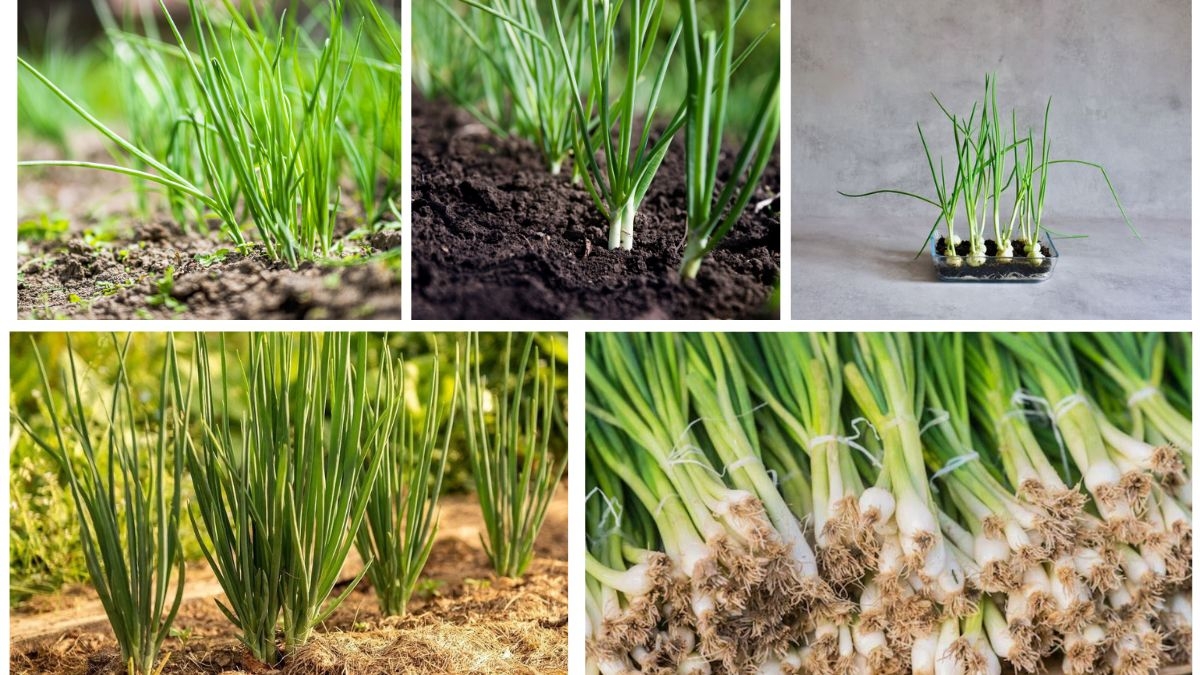





Leave A Comment